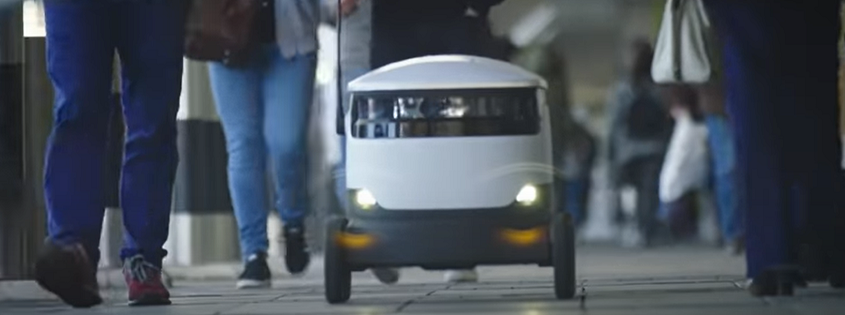The pace of local robot deliveries is massively accelerating and won’t go back
Over the last years there has been plenty of media coverage of delivery robots and delivery drones, but the actual number of fully automated deliveries has been highly limited.
In a world of social distancing and restaurant and shop closures around the world, local deliveries have moved from what was already a substantial industry to a decent chunk of the economy.
While employment losses in other sectors have meant there are more people available to do deliveries, there are constraints including scheduling, cost, and health concerns from both customers and delivery workers.
There are a number of reports of soaring demand for delivery robots.
Wall Street Journal says the scramble for delivery robots is on and startups can barely keep up, pointing to hospitals that are using delivery robots to shuttle meals, linen, and medical supplies around the hospital to ease the burden on staff as well as the heightened demand for food delivery.
However supply doesn’t seem ready to meet demand.
The arrival of robotic supply had already appeared a foregone conclusion, not less than in locations the place it made sense. However the pandemic has turned companies, governments and customers from cautious beta testers into keen early adopters. But what ought to be a windfall for startups might have arrived too early—earlier than they’re able to ramp up manufacturing of their supply robots, and forward of approvals by nationwide and regional governments that decide the place and the way robots may be deployed.
Starship Technologies, one of the leaders in pavement delivery robots, has for over a year been using the UK town of Milton Keynes to test its offerings.
Tbeir popularity has surged, and the company is offering its services for free to National Health Service (NHS) staff.
A nice Ars Technica article, The pandemic is bringing us closer to our robot takeout future, goes into detail on the technology and deployment of the delivery robots, and suggests we could have millions of these robots around us:
Robot deliveries remain rare enough that it’s easy to dismiss them as curiosities. But that’s a mistake. The technology works now. Starship already has hundreds of robots in service delivering food to real customers. Spurred by demand from locked-down customers, that number could soon soar to the thousands and eventually into the millions. With lower costs and no need to tip, robots could make takeout more popular than ever as it gradually displaces human-driven food deliveries.
Certainly there are some neighborhoods that are better suited to sidewalk delivery than others. The Ars Technica story follow a robot on a university campus. Milton Keynes is a relatively new planned town with ample space and a young demographic.
However, as for many other developments, our current pandemic is vastly accelerating shifts, after which we are unlikely to return to how we did things before.
Expect to see more local robot delivery.



